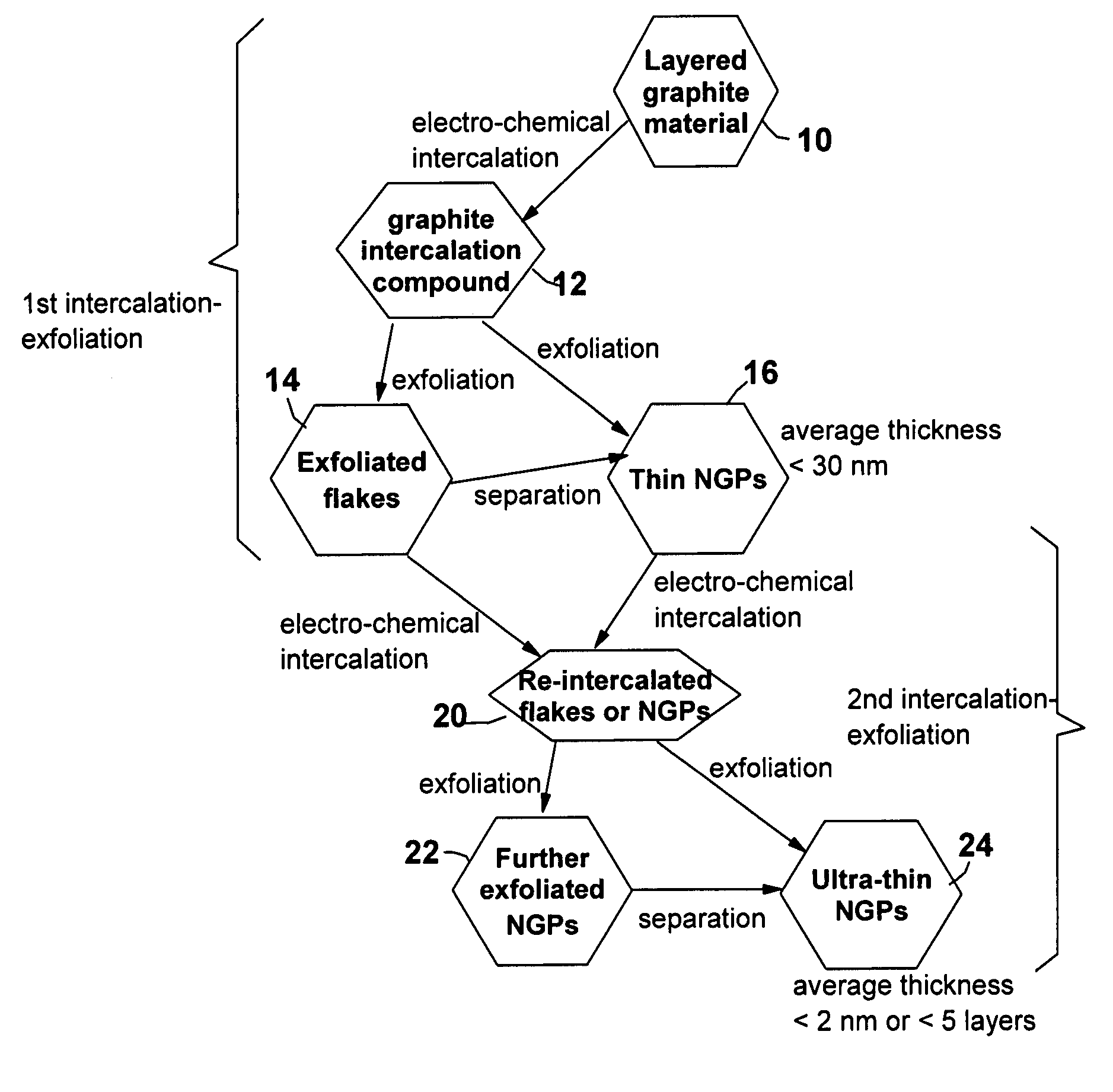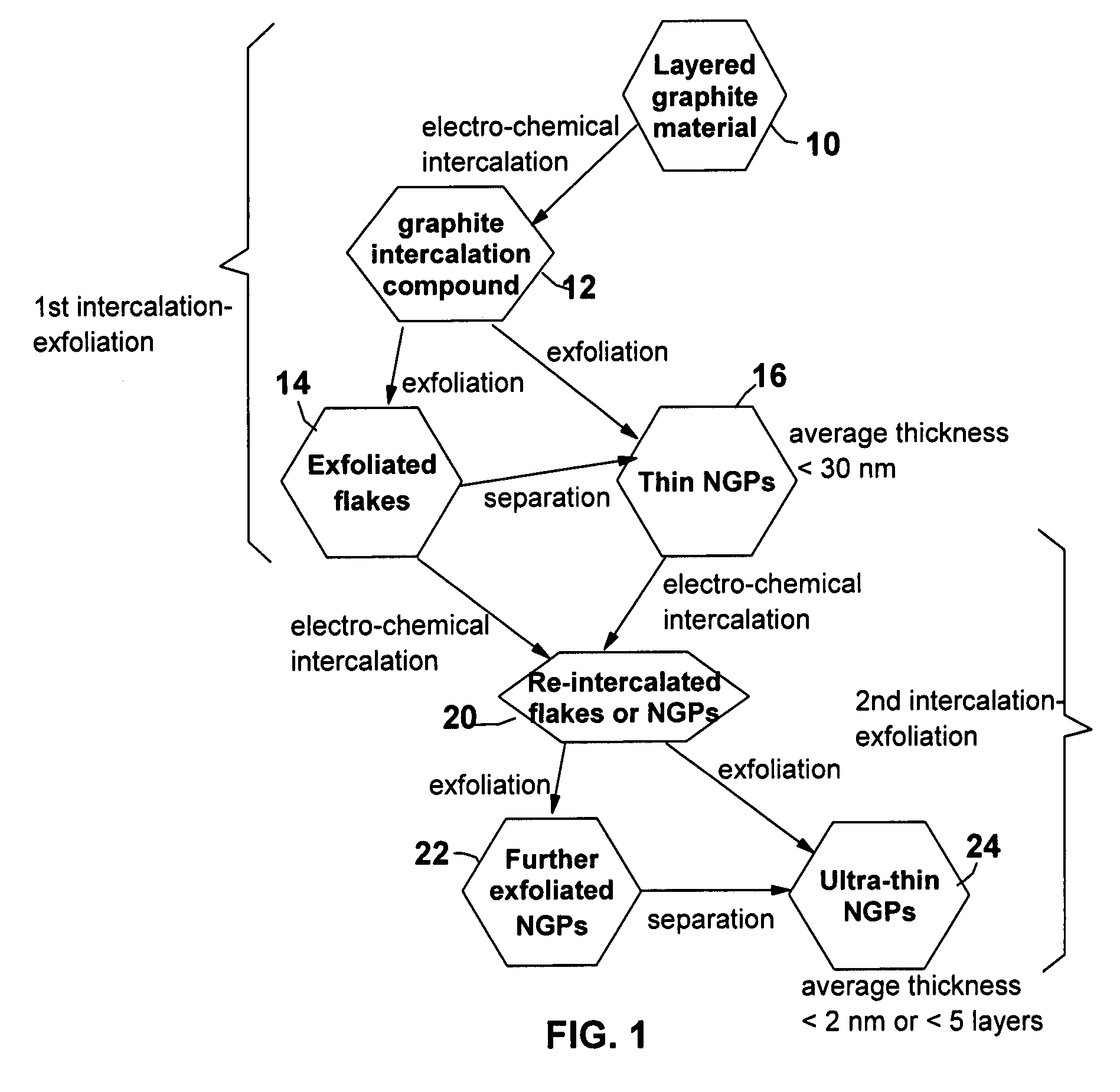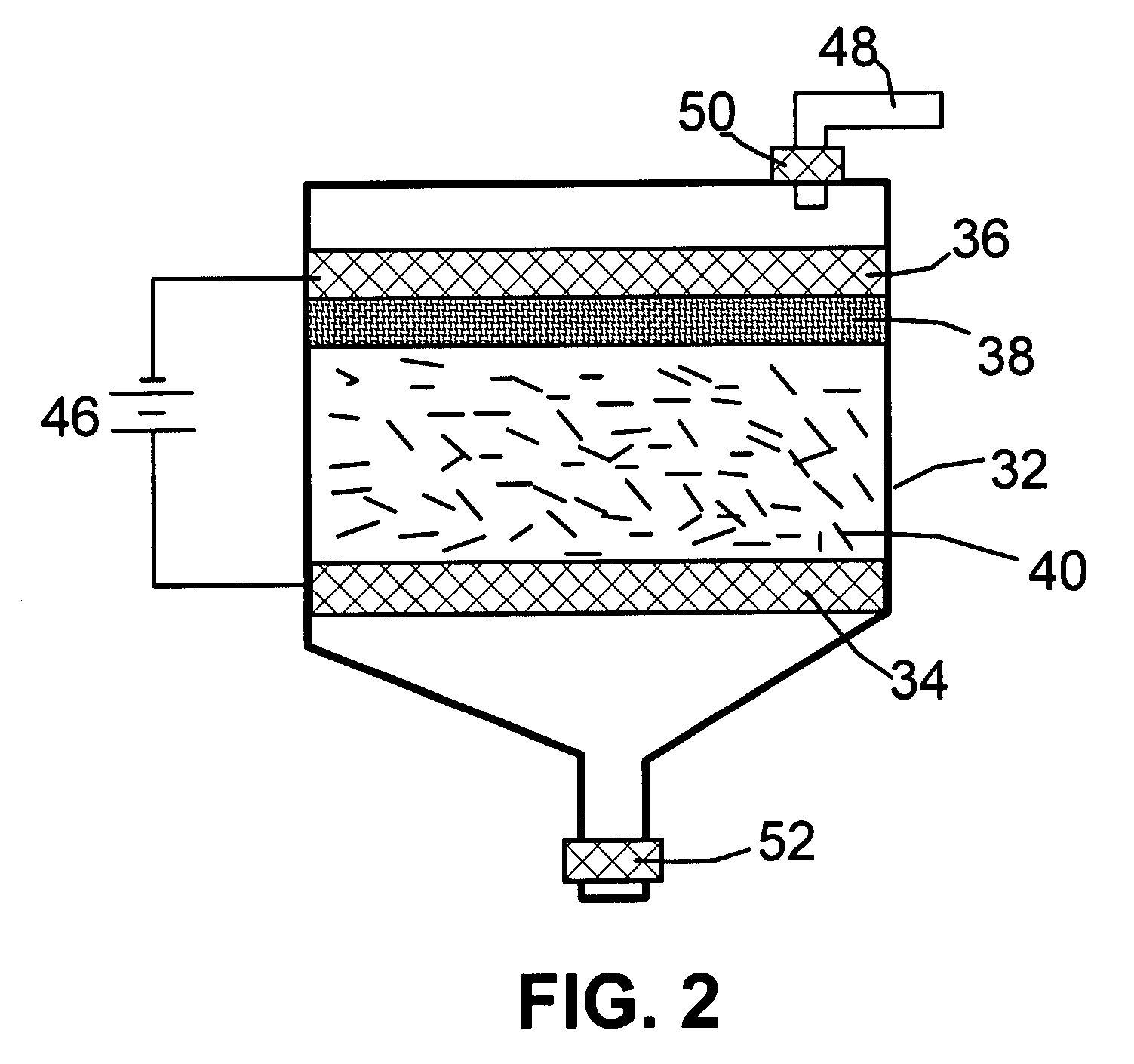Electrochemical method of producing nano-scaled graphene platelets
- Summary
- Abstract
- Description
- Claims
- Application Information
AI Technical Summary
Benefits of technology
Problems solved by technology
Method used
Image
Examples
example 1
Nano-Scaled Graphene Platelets (NGPs) From Highly Oriented Pyrolytic Graphite (HOPG) Flakes Via Repeated Electrochemical Intercalation and Exfoliation Steps
[0065]One gram of HOPG flakes, ground to approximately 20 μm or less in sizes, were used as the anode material and 1,000 mL of formic acid was used as the electrolyte and intercalate source. The anode supporting element is a platinum plate and the cathode is a graphite plate of approximately 4 cm in diameter and 0.2 cm in thickness. The separator, a glass fiber fabric, was used to separate the cathode plate from the graphite flakes and to compress the graphite flakes down against the anode supporting element to ensure that the graphite flakes are in electrical connection with the anode supporting element to serve as the anode. The electrodes, electrolyte, and separator are contained in a Buchner-type funnel to form an electrochemical cell. The anode supporting element, the cathode, and the separator are porous to permit intercala...
example 2
NGPs from Natural Graphite Flakes Intercalated with Acetic Acid
[0070]One gram of natural flake graphite having 50 mesh particle size was subjected to the same electrochemical intercalation conditions described in Example 1, with formic acid replaced by acetic acid. The graphite flakes were subjected to an electrolytic oxidation treatment at a current of 0.5 amps (current density of about 0.04 amps / cm2) and at a cell voltage of about 6 volts for 3 hours. Following the electrolytic treatment, the resulting intercalated flake was washed with water and dried. Subsequently, the intercalated compound was transferred to a furnace pre-set at a temperature of 500° C. for 45 seconds. The compound was found to induce extremely rapid and high expansions of graphite crystallites with an expansion ratio of greater than 100. After a mechanical shearing treatment in a laboratory-scale Cowles rotating blade device for 15 minutes, the resulting NGPs exhibit a thickness ranging from three graphene she...
example 3
Repeated Interaction, Exfoliation, and Separation Steps of Graphite Oxide
[0071]Graphite oxide was prepared by oxidation of graphite flakes with sulfuric acid, nitrate, and potassium permanganate according to the method of Hummers [U.S. Pat. No. 2,798,878, Jul. 9, 1957]. Upon completion of the reaction, the mixture was poured into deionized water and filtered. The sample was then washed with 5% HCl solution to remove most of the sulfate ions and residual salt and then repeatedly rinsed with deionized water until the pH of the filtrate was approximately 7. The intent was to remove all sulfuric and nitric acid residue out of graphite interstices. The slurry was spray-dried and stored in a vacuum oven at 60° C. for 24 hours. The interlayer spacing of the resulting laminar graphite oxide was determined by the Debey-Scherrer X-ray technique to be approximately 0.73 nm (7.3 Å), indicating that graphite has been converted into graphite oxide.
[0072]The dried intercalated graphite oxide powde...
PUM
 Login to View More
Login to View More Abstract
Description
Claims
Application Information
 Login to View More
Login to View More - R&D
- Intellectual Property
- Life Sciences
- Materials
- Tech Scout
- Unparalleled Data Quality
- Higher Quality Content
- 60% Fewer Hallucinations
Browse by: Latest US Patents, China's latest patents, Technical Efficacy Thesaurus, Application Domain, Technology Topic, Popular Technical Reports.
© 2025 PatSnap. All rights reserved.Legal|Privacy policy|Modern Slavery Act Transparency Statement|Sitemap|About US| Contact US: help@patsnap.com



